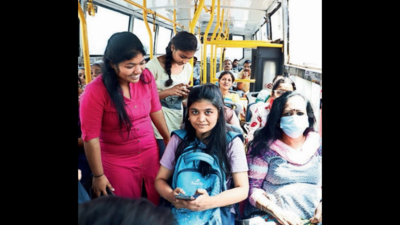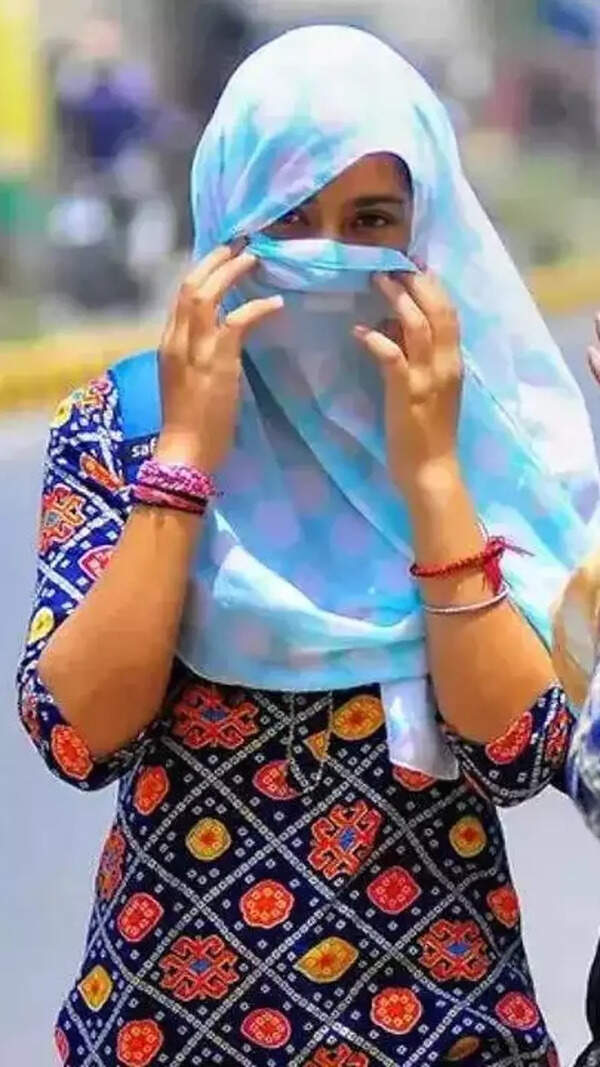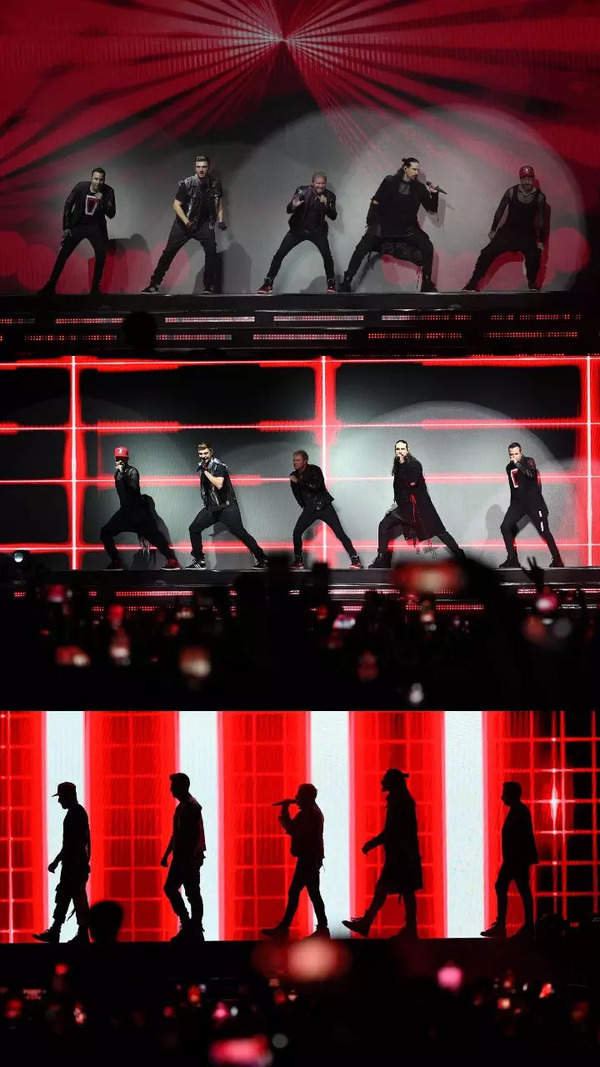- News
- City News
- bengaluru News
- Free ride: Shift of women commuters from Namma Metro and private buses likely
Trending Topics
Free ride: Shift of women commuters from Namma Metro and private buses likely

Private bus operators are a worried lot, expecting a serious impact on their business
BENGALURU: With the rollout of the free bus service for women from June 11, the government expects a shift in ridership from means of mass transport run by private operators and Namma Metro to buses operated by state road transport corporations.
One of the five key poll guarantees issued by the Congress, ahead of the recent assembly elections, the free bus service for women was considered to be a major factor that helped the party wrest power with a thumping majority.
However, the bigger concern now is the ability of the four state-run road transport corporations (RTC) - BMTC, KSRTC, NWKRTC and NEKRTC - to sustain the scheme given that these entities are already incurring heavy losses.
Transport minister R Ramalinga Reddy told TOI the corporations may not be burdened with any additional financial liability as it is the government that will mop up the cost of offering free rides.
"According to preliminary estimates, we expect the annual bill to be around Rs 3,000 to Rs 4,000 crore. However, the corporations will be sending the bills to the government for reimbursement on a monthly basis," Reddy said.
According to the minister, while women passengers will not be asked to pay for the rides, their tickets will still be issued by the bus operators for backend calculations for reimbursements.
On whether the corporations will be required to deploy additional fleet to cater to an anticipated rise in passenger load, Reddy said such a move may not be necessary on a sustained basis.
40% of bus fleet running empty, says minister
"Women may initially be enthusiastic about taking free rides, but that is expected to die down and only those who travel for work will continue to travel. We already have close to 40 per cent of our bus fleet running empty and expect them to soak up any increase in the number of women passengers," he added.
The minister said the bigger challenge for the government will be to address the shift from Metro services and buses run by private operators in Bengaluru to government-run buses.
"The influx we expect is likely to come largely from women Metro users and those who travel in private buses," Reddy said.
According to transport department sources, the shift from both these modes of transport may be minimal as very few Metro users tend to consider the free bus service as an effective alternative to the comforts of travel on air-conditioned trains. Moreover, government buses on private bus routes do not have the required frequency for women passengers to utilise the service effectively.
Anjum Parvez, the managing director of Bengaluru Metro Rail Corporation Limited (BMRCL), said: "It is very difficult to make any assessment at the beginning of the scheme rollout. We will have to wait and watch for at least 15 days to assess the impact on Metro ridership."
Private bus operators, meanwhile, are a worried lot, expecting a serious impact on their business. These operators are preparing to implore the state government to take remedial measures and save their businesses.
One of the largest private bus operators in Karnataka is in the district of Dakshina Kannada (DK) and Udupi.
"In Mangaluru city alone we have 328 private buses, running at least 1,000 trips daily. While government buses are minimal when compared to our fleets, a free bus service will seriously dent our ridership," said Jayasheela Adyanthaya, president of the DK city private bus service union.
Adyanthaya said the impact of the free bus service will vary from one route to another with private players who operate on notified state routes likely to be the worst affected with at least 50 per cent loss in revenue.
One of the five key poll guarantees issued by the Congress, ahead of the recent assembly elections, the free bus service for women was considered to be a major factor that helped the party wrest power with a thumping majority.
However, the bigger concern now is the ability of the four state-run road transport corporations (RTC) - BMTC, KSRTC, NWKRTC and NEKRTC - to sustain the scheme given that these entities are already incurring heavy losses.
Transport minister R Ramalinga Reddy told TOI the corporations may not be burdened with any additional financial liability as it is the government that will mop up the cost of offering free rides.
"According to preliminary estimates, we expect the annual bill to be around Rs 3,000 to Rs 4,000 crore. However, the corporations will be sending the bills to the government for reimbursement on a monthly basis," Reddy said.
According to the minister, while women passengers will not be asked to pay for the rides, their tickets will still be issued by the bus operators for backend calculations for reimbursements.
On whether the corporations will be required to deploy additional fleet to cater to an anticipated rise in passenger load, Reddy said such a move may not be necessary on a sustained basis.
40% of bus fleet running empty, says minister
"Women may initially be enthusiastic about taking free rides, but that is expected to die down and only those who travel for work will continue to travel. We already have close to 40 per cent of our bus fleet running empty and expect them to soak up any increase in the number of women passengers," he added.
The minister said the bigger challenge for the government will be to address the shift from Metro services and buses run by private operators in Bengaluru to government-run buses.
"The influx we expect is likely to come largely from women Metro users and those who travel in private buses," Reddy said.
According to transport department sources, the shift from both these modes of transport may be minimal as very few Metro users tend to consider the free bus service as an effective alternative to the comforts of travel on air-conditioned trains. Moreover, government buses on private bus routes do not have the required frequency for women passengers to utilise the service effectively.
Anjum Parvez, the managing director of Bengaluru Metro Rail Corporation Limited (BMRCL), said: "It is very difficult to make any assessment at the beginning of the scheme rollout. We will have to wait and watch for at least 15 days to assess the impact on Metro ridership."
Private bus operators, meanwhile, are a worried lot, expecting a serious impact on their business. These operators are preparing to implore the state government to take remedial measures and save their businesses.
One of the largest private bus operators in Karnataka is in the district of Dakshina Kannada (DK) and Udupi.
"In Mangaluru city alone we have 328 private buses, running at least 1,000 trips daily. While government buses are minimal when compared to our fleets, a free bus service will seriously dent our ridership," said Jayasheela Adyanthaya, president of the DK city private bus service union.
Adyanthaya said the impact of the free bus service will vary from one route to another with private players who operate on notified state routes likely to be the worst affected with at least 50 per cent loss in revenue.

About the Author
Sandeep MoudgalJournalist by profession, 15 years in the field with Politics and Policy as forte. He is an Assistant Editor with Bengaluru bureau and Karnataka as his jurisdiction. Has a Masters degree in Ancient History and Archaeology from Mysore University along with a PGDJ from the Asian College of Journalism.
Start a Conversation
FOLLOW US ON SOCIAL MEDIA
FacebookTwitterInstagramKOO APPYOUTUBE







